
All issues were recess printed and perforated by De La Rue. The stamp shows Mount Cook, the highest mountain in New Zealand.
There are three frame plates: 1, 3 and 4 and two unnumbered centre plates. Sheets had 60 stamps in 10 rows of 6.
Frame plate 1

Perf 14-13x13½
The initial issue on 1 May 1935 was on paper with a single watermark. The frame plate was numbered 1, but the centre plate was unnumbered.
The stamps were perforated 14-13x13½,
i.e. the top and bottom perforations on each stamp were perf
14 for half the length and perf 13 for the other half.
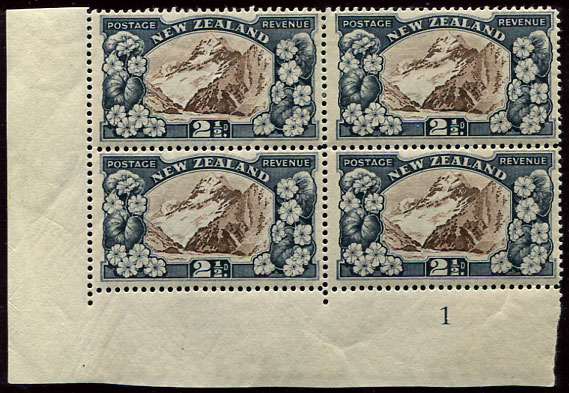
Perf 13½x14
In November 1935, the stamp was issued perf 13½x14. Although it was a comb head, the corners show the characteristics of a line perf as can be seen in the plate block on the right.
To try and get a better print, this printing was on damp paper and the gum, which was thick and brown, was added after the sheets had been printed.
Multiple watermark perf 14-13x13½
In April 1936, the stamp was issued on multi watermarked paper in the original perforation. In all printings from plate 1, the bottom frame line is weak.
On 26 July 1938, stamps were issued from plate 1 overprinted Official.
Frame plate 3
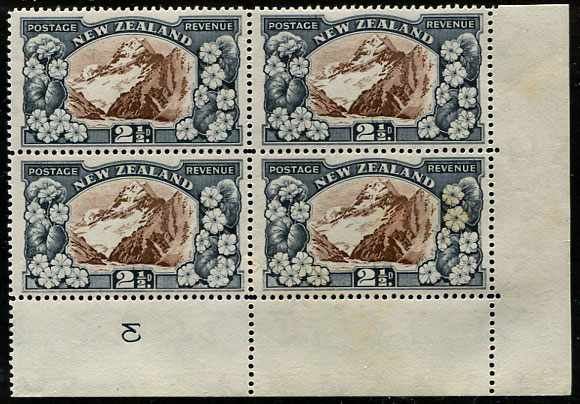
A new unnumbered centre plate together with a new frame plate 3 (there was no plate 2) were used from November 1936.
By mistake, the plate number is in reverse and appears under the 5th stamp in the bottom margin instead of under the 2nd as in plate 1.
Initially the stamps were line perf 14.
More than one perforation head was used.
This plate block shows the perforations through the bottom margin,
but only one hole in the side margin.
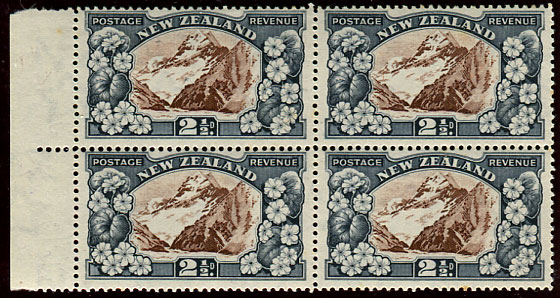
Other sheets were line perforated 14 with a head than extended more into the side margins as shown in the next example.
In 1938 the perforations were changed to a comb perf 14.
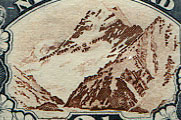

Although the new centre plate is unnumbered, it is easily distinguished from the first unnumbered centre plate as the shading lines in the sky and in the mountains are much deeper. The comparison is shown on the left.
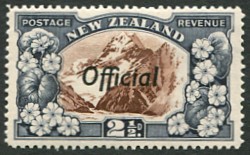
On 26 July 1938 stamps from plate 3 and line perf 14 were overprinted Official while in 1945 Official stamps from plate 3 and comb perf 14 were issued. The example clearly shows line characteristics.
All stamps from plate 3 are on fine multiple watermarked paper.
Frame plate 4
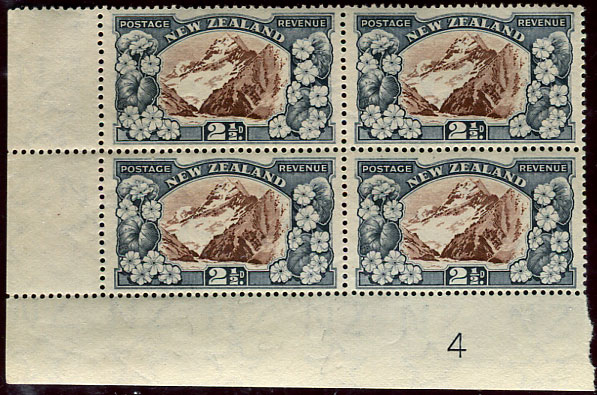
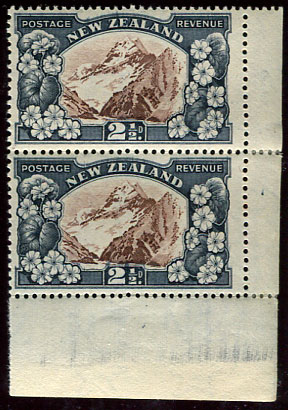
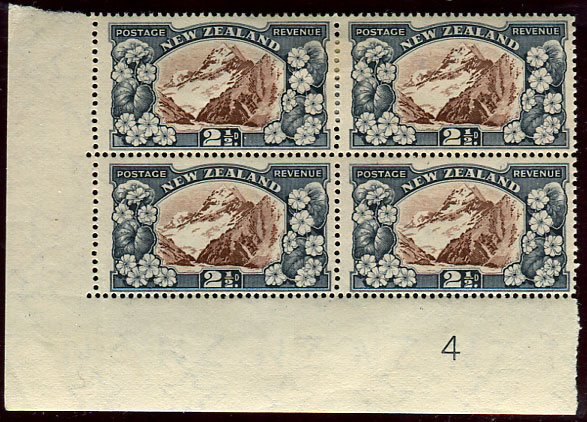
Stamps from frame plate 4 first appeared in November 1942 and are always on coarse multiple watermarked paper.
There are two perforations 13¾x13½ and 14¼x13½ with the first being the more common. They were used concurrently.
In perf 13¾x13½, the perforations continue through the side
margins while in perf 14¼x13½ they do not.
The reason is that the stamps perf 13¾x13½ were perforated using the centre portion of comb heads made for
the 5d and 2s stamps which were issued in sheets of 10 rows of 12 rather than the 10 rows of 6
of the 2½d [1].
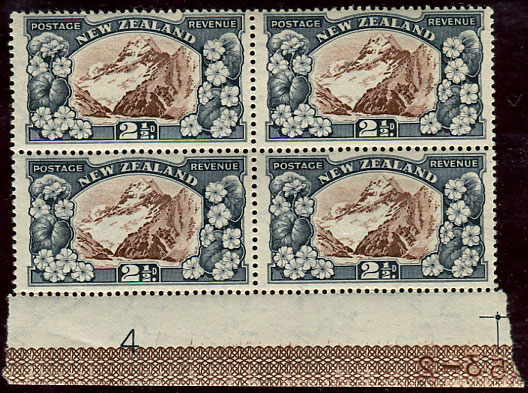
In some printings on both perforations, an engine turned design in the colour of the centre plate appears in the bottom margin overlapping the figure 4.
The number 1653-2 appears in reverse under stamps 3 and 4 although it was normally cut off when the sheets were trimmed.
The 2½d was withdrawn on 30 April, 1947.
The above information is taken from The Postage Stamps of New Zealand Vol 1, 2 and 4 published by the Royal Philatelic Society of New Zealand in 1938, 1950 and 1964. All scans were made by the author. [1] Rickards, G, The Four Perforating Heads used by De la Rue & Co. on New Zealand 1942 2½, 5d, 2s and 3s Pictorials, The New Zealand Stamp Collector, vol 93, pp 45-53, June 2013.